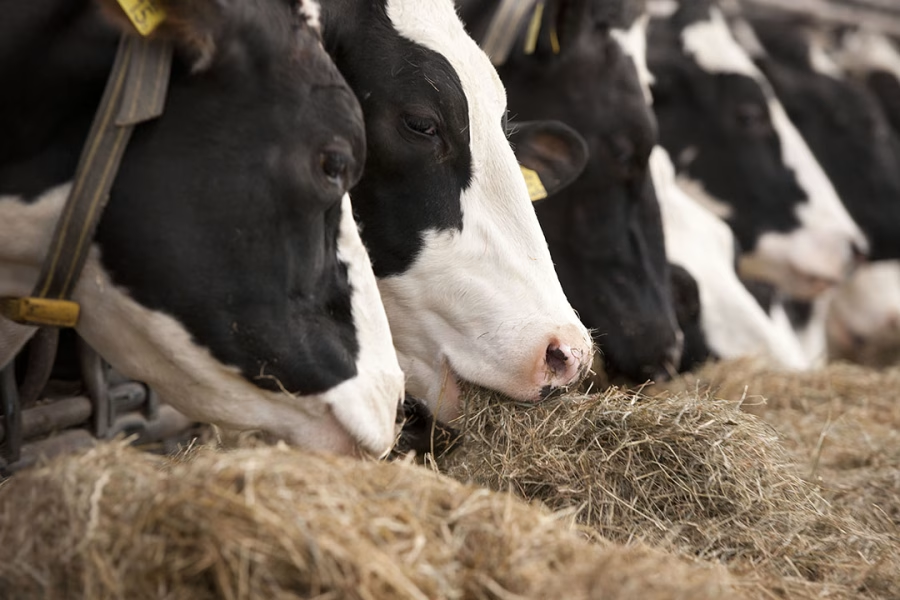
Markets have been buzzing with activity, and you’re probably wondering what’s moving on the needle today. On Thursday, September 5, 2024, we saw interesting, steady-to-higher movements in CME cash dairy trading. It’s a sign that underlying shifts might need our attention. Let’s dive right into the numbers.
- Dry Whey: Increased slightly by $0.0025 to hit $0.5675. Although no sales were recorded, this minor uptick is worth noting.
- Forty-Pound Cheese Blocks: The price held steady at $2.23, with no sales recorded.
- Cheese Barrels: Unchanged at $2.25, but we did see one sale at that price.
- Butter: Increased by $0.0150, reaching $3.1625. Notably, three sales were recorded at prices ranging from $3.1625 to $3.17.
- Nonfat Dry Milk: A modest uptick of $0.0025 brought the price to $1.3575. Two sales were recorded at prices close to this mark, $1.3575 and $1.36.
Class III and Cheese began lower Thursday morning, reflecting the previous day’s follow-through selling. Nearby futures fell 40-50 cents ahead of spot trade. While Wednesday’s spot stability dampened buyer interest, yesterday was different. Futures recovered from their lows, finishing just 10-20 cents down, thanks to an unaltered spot market. Remember that you must fuel a bull market, and spot stability might often be enough, given bullish fundamentals. Given previous USDA report shocks, market investors may also be positioning ahead of today’s July Dairy Product data. Class III futures traded well with over 2,600 contracts, with open interest increasing by 235 contracts. Cheese futures activity decreased, with 304 contracts traded, while open interest increased by 72 contracts.
Spot butter recorded its first advance in six days, up 1.5 cents on three deals. After 500 contracts were traded on Wednesday, barely 100 were transacted yesterday, mainly for September. Butter output is predicted to fall month after month and climb just 1.5% from last year, owing to potential milk diversions to cheese production. This will continue to boost these markets as we approach contract highs.
Spot nonfat increased marginally to a new high, while futures have stabilized over the past two days, decreasing by around 1-2 cents through Q2. Stable to weaker global markets are expected to have slowed the increase, but solid US fundamentals will keep nonfat prices high. As we trade near contract highs, end-users may feel under-hedged for 2025 and must decide whether to wait for a price drop or get coverage.
For the first week of September in the Upper Midwest, spot milk basis levels were consistent with the previous year. Labor Day brought fewer trading volumes. According to farmers and processors, recent warm weather has pressured milk production. School districts are in full gear, resulting in increased Class I demand. Despite the poor trade, several stakeholders reported no milk load proposals to the USDA, which was uncommon for a holiday week. Margin levels are usually favorable, signaling expansion to alleviate the limited milk supply, but there are few substitutes to fuel that increase.
Dairy cow slaughter in the United States remains low. For the week ending August 24th, the slaughter was a little over 50,000 head, down 12.91% from the previous year. Year-to-date slaughter is 14.40% lower than the prior year after 34 weeks. Over the last four weeks, dairy cow slaughter declined 14.04% year on year, the smallest margin in 14 weeks. Total beef slaughter is somewhat lower than a year ago, down 2.81%, as beef cows reclaimed some market share in the cattle market this week.
Daily CME Cash Dairy Product Prices ($/lb.)
| Final | Change ¢/lb. | Trades | Bids | Offers | |
| Butter | 3.1625 | 1.5 | 3 | 3 | 1 |
| Cheddar Block | 2.23 | NC | 0 | 1 | 1 |
| Cheddar Barrel | 2.25 | NC | 1 | 0 | 0 |
| NDM Grade A | 1.3575 | 0.25 | 2 | 0 | 3 |
| Dry Whey | 0.5675 | 0.25 | 0 | 2 | 1 |
Weekly CME Cash Dairy Product Prices ($/lb.)
| Tue | Wed | Thur | Current Avg. | Prior Week Avg. | Weekly Volume | |
| Butter | 3.1525 | 3.1475 | 3.1625 | 3.1542 | 3.182 | 16 |
| Cheddar Block | 2.215 | 2.23 | 2.23 | 2.225 | 2.128 | 2 |
| Cheddar Barrel | 2.26 | 2.25 | 2.25 | 2.2533 | 2.2115 | 3 |
| NDM Grade A | 1.3425 | 1.355 | 1.3575 | 1.3517 | 1.3115 | 10 |
| Dry Whey | 0.57 | 0.565 | 0.5675 | 0.5675 | 0.5605 | 2 |
CME Futures Settlement Prices
| Tue | Wed | Thur | |
| Class III (SEP) $/CWT. | 22.54 | 22.6 | 22.83 |
| Class IV (SEP) $/CWT. | 22.51 | 22.38 | 22.7 |
| Cheese (SEP) $/LB. | 2.213 | 2.219 | 2.227 |
| Blocks (SEP)$/LB. | 2.135 | 2.135 | 2.217 |
| Dry Whey (SEP) $/LB. | 0.5328 | 0.5285 | 0.5558 |
| NDM (SEP) $/LB. | 1.2775 | 1.29 | 1.3275 |
| Butter (SEP) $/LB. | 3.165 | 3.17 | 3.1853 |
| Corn (SEP) $/BU. | 3.8525 | 3.9125 | 3.9 |
| Corn (DEC) $/BU. | 4.09 | 4.13 | 4.1075 |
| Soybeans (SEP) $/BU. | 9.96 | 1.005 | 9.995 |
| Soybeans (NOV) $/BU. | 1.015 | 1.0275 | 1.0225 |
| Soybean Meal (SEP) $/TON | 320 | 323.3 | 320.6 |
| Soybean Meal (DEC) $/TON | 321.1 | 328.6 | 326.9 |
| Live Cattle (OCT) $/CWT. | 179.53 | 179.18 | 177.13 |
 Join the Revolution!
Join the Revolution!
Bullvine Daily is your essential e-zine for staying ahead in the dairy industry. With over 30,000 subscribers, we bring you the week’s top news, helping you manage tasks efficiently. Stay informed about milk production, tech adoption, and more, so you can concentrate on your dairy operations.







 Join the Revolution!
Join the Revolution!




